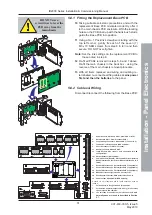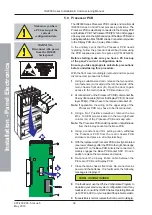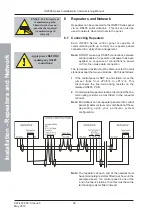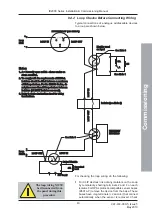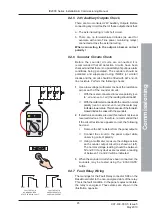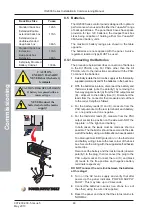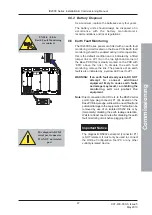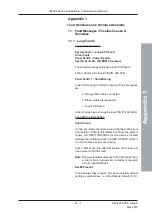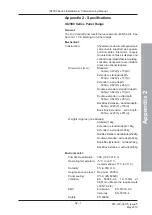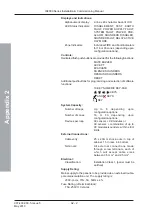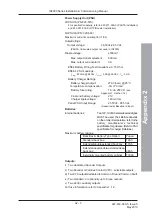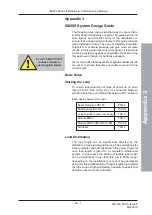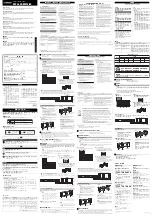
ID2000 Series Installation & Commissioning Manual
Commissioning
45
997-433-000-5, Issue 5
May 2010
8.4.5 24V Auxiliary Outputs Check
There are two monitored 24V Auxiliary Outputs. Before
connecting any circuit to either of these outputs check that:
a. The external wiring is not short circuit.
b. There are no forward-biased diodes (as used for
example with end-of line power monitoring relays)
connected across the external wiring.
When connecting to the output, observe correct
polarity!
8.4.6 Sounder Circuits Check
Before the sounder circuits are connected it is
recommended that all detection circuits have been
checked and that there is no possibility of spurious alarm
conditions being generated. The sounders should be
polarized and suppressed using IN4002 (or similar)
diodes and the circuits should be fitted with 4k7 end-of-
line resistors. Perform the following checks:
1
Use a low-voltage multimeter to check the resistance
across each of the sounder circuits:
i.
With the meter connected in reverse polarity (+ve
to ‘-ve’ and -ve to ‘+ve’) the reading should be 4k7.
ii. With the multimeter connected to the circuit in normal
polarity (+ve to ‘+ve’ and -ve to ‘-ve’) the meter may
indicate a lower value. This is because of the forward-
biased diodes in series with the sounders.
2
If electronic sounders are used this test will not reveal
reversed devices. It is, therefore, recommended that
if the circuit resistance appears correct, the following
be done:
i
Remove the 4k7 resistors from the panel outputs.
ii
Connect the circuit to the panel output while
observing correct polarity.
iii Using a multimeter, measure the voltage across
each sounder output circuit (as shown at left).
The normal voltage reading should be between
5V and 8V. If any devices are reversed, a reading
of between 1V and 2V will be indicated.
3
When the sounder circuits have been connected, the
sounders may be tested using the ‘EVACUATE’
button.
8.4.7 Fault Relay Wiring
The markings for the Fault Relay connector SK8 on the
Base Board refer to the non-energised state of the relay.
This is the fault condition. In the panel’s quiescent state,
the relay is energised. These states are shown in the
illustration opposite.
NO
C
NC
FAULT RELAY IN
NON-ENERGISED
STATE, PANEL IN FAULT
NO
C
NC
FAULT RELAY IN
ENERGISED STATE,
PANEL QUIESCENT
88.888
Ohms
4k7
-ve
+ve
+ve
-ve
Volts

